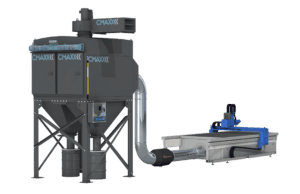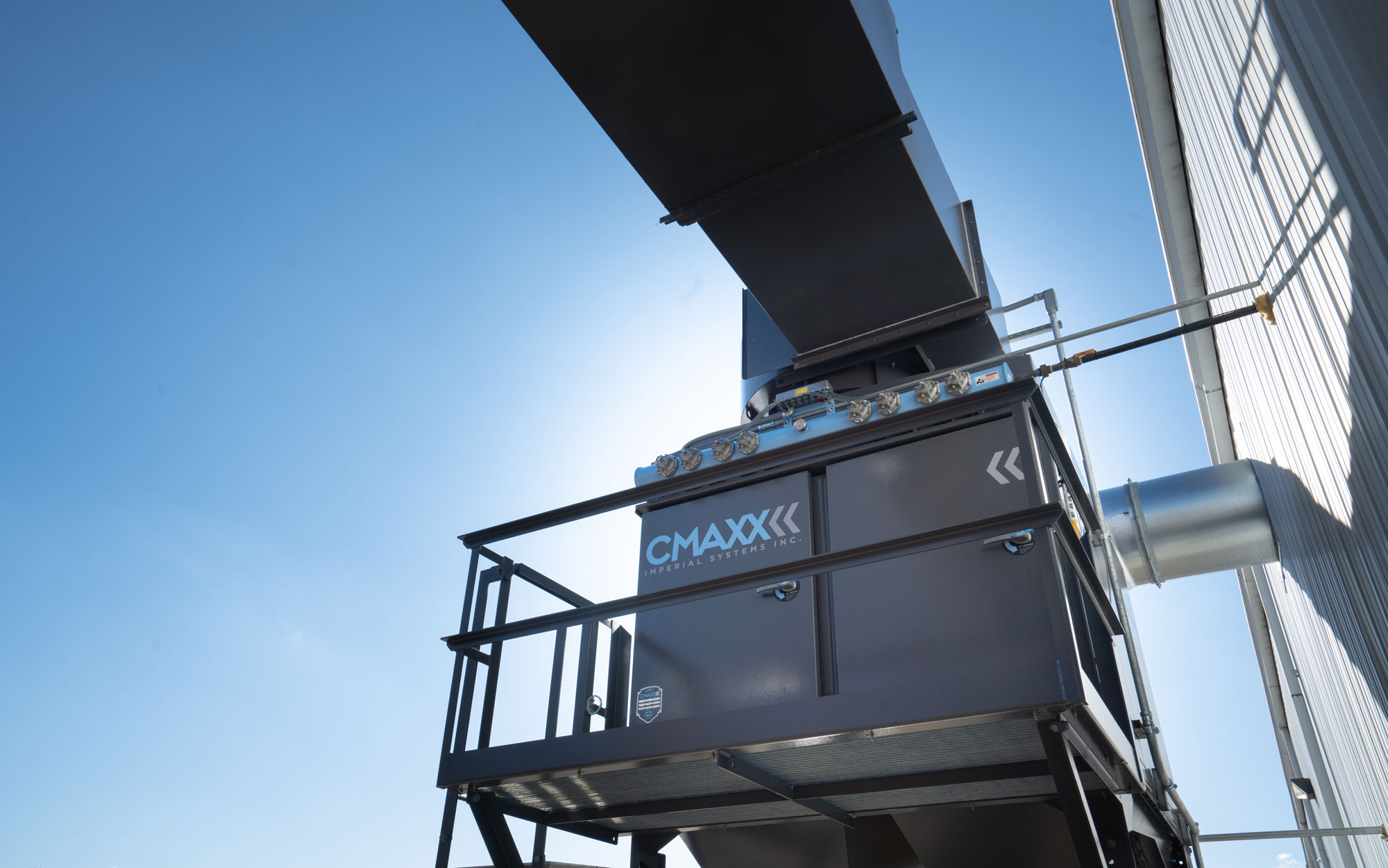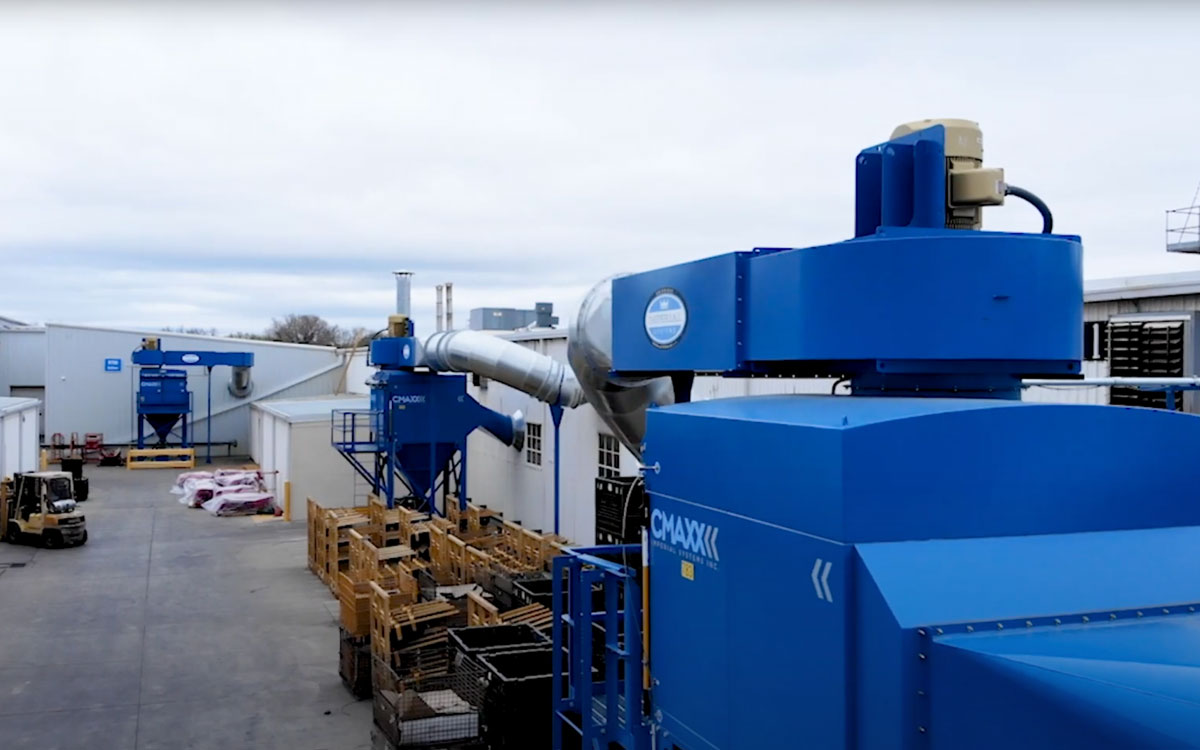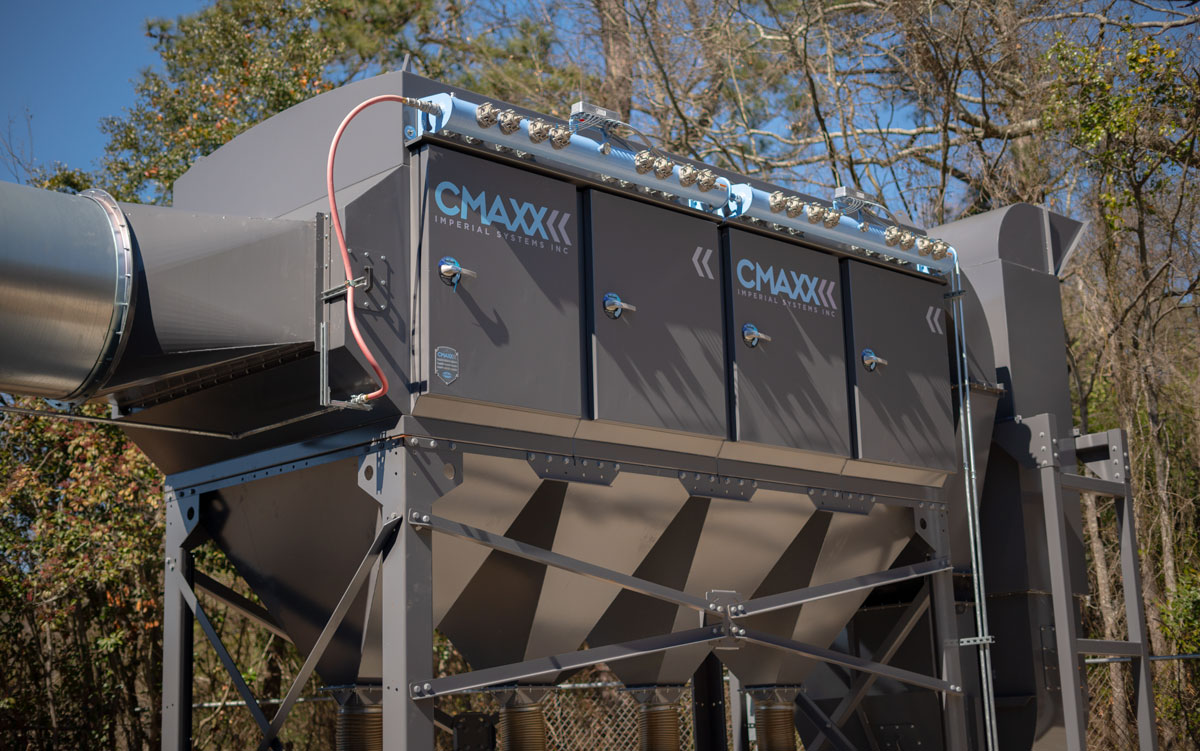We get a lot of questions about fumes from welding or laser and plasma cutting. People are aware that there are health risks. Further, many of them have heard about hexavalent chromium. It is a good reason to be careful when working around plasma fumes, but it’s not the only reason. “Hex chrome” is just one of the hazards involved.
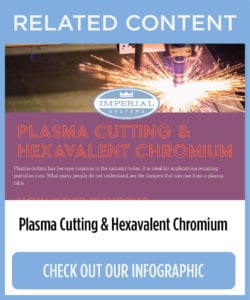 What is Hex Chrome?
What is Hex Chrome?
You may have heard that hexavalent chromium, often called hex chrome, is mainly a problem for people working with stainless steel. Stainless steel does contain much more chromium than other types of steel. However, many metals are either alloyed or electroplated with chromium to protect them from corrosion.
Metals don’t usually contain hexavalent chromium. Instead, when the metal is heated to a high temperature, the chromium reacts with oxygen to form compounds. Specifically, hexavalent chromium is one of them. This compound, when inhaled as in plasma fumes, is known to increase the risk of lung cancer and other cancers. When in contact with the skin, it can cause irritation and skin sores.
What are the other Risks?
Other common metals that people may encounter in welding smoke or plasma cutting fumes include iron, copper, zinc, nickel, manganese, aluminum, tin, beryllium, cadmium, lead, and titanium. Most of these can certainly irritate your eyes, nose, and throat. Others, like cadmium, are cancer-causing agents. Some, such as lead and manganese, damage your nerves and brain. Beryllium can be even more hazardous and cause fatal lung disease. Components of metal fumes can also cause kidney damage.
No plasma fume or smoke from cutting or welding is safe to inhale. Even iron, which is not toxic, can accumulate in the lungs and cause long-term damage. The lungs are very sensitive to damage, and welding or cutting produces metal particles small enough to be easily inhaled. Whether it’s referred to as fumes, smoke, gases, or dust, it’s an airborne cloud of tiny particles that can make their way deep into your lungs. They can be as small as 0.3 microns, which is 250 times smaller than human hair and about 15 times smaller than a red blood cell.
Other metals, including nickel, zinc, and copper, cause “metal fume fever”, a flu-like response to chemicals released by damaged cells in the lungs. The symptoms resemble the flu, with headaches, fever and chills, muscle aches, and coughing. Welding is the occupation most likely to result in this condition, but plasma fumes and laser cutting fumes can also cause it.
It’s often reported that drinking milk can help prevent this condition, and many people swear by it. Either way, it doesn’t prevent the long-term lung damage that occurs when metal dust is inhaled. Drinking milk won’t hurt, but avoiding the toxic effects of exposure altogether is a safer bet.
What can I do about the welding and plasma fumes?
Fortunately, there’s no reason to put your health in danger to do your job. OSHA regulations set safe exposure levels for almost all plasma and other metal fumes. They recommend several methods to prevent over-exposure. A CMAXX™ dust and fume collection system (CMAXX Dust and Fume Collector) is efficient and effective. It can reduce or eliminate the need for uncomfortable and often improperly used respirators. Our team can advise you on the best ways to keep people safe when they’re welding or working around laser or plasma cutting.
We hope this information is helpful for the people who have asked us questions in the past about welding and plasma fumes and who come to us with questions in the future!
If you need more information, please click the CHAT NOW box during normal business hours for immediate help. You can also contact us to request more information.
Reference Articles
- Facts about Plasma Cutting and Plasma Technology. Penrose: BOC, n.d. BOC. Web.
- Gibson, Hugh. “Plasma Cutting Using A Hand Held Machine.” Plasma Cutting Fumes Danger! N.p., 19 Mar. 2013. Web. 08 Jan. 2014.
- Plasma Cutter Safety Guide | Longevity-inc.com.” Plasma Cutter Safety Guide. Longevity-inc.com, n.d. Web. 08 Jan. 2014.
- Sheahan, Kyra. “OSHA Safety Standard for Plasma Dust.” EHow. Demand Media, 28 Nov. 2010. Web. 08 Jan. 2014.
- Stone, Joe. “OSHA Safety Standard for Plasma Dust and Fumes.” Work. Demand Media, n.d. Web. 08 Jan. 2014.
- Zlotnicki, Steve. “Does Plasma Cutting Produce Hex Chrome?” Plasma Arc Cutting of Stainless Steel Will Produce Hexavalent Chromium. Esab-cutting, 12 May 2013. Web. 08 Jan. 2014.
